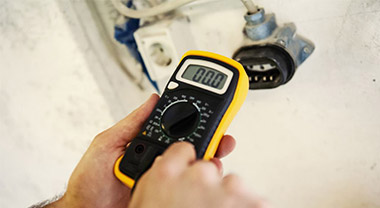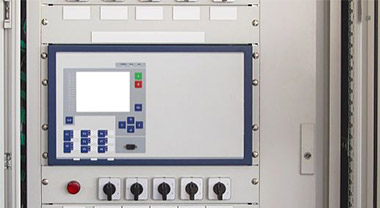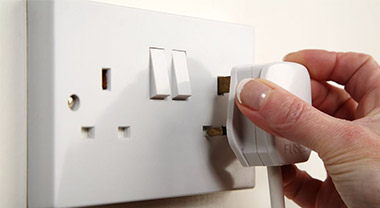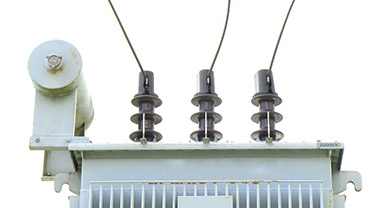What is a molded case circuit breaker?
The molded case circuit breaker(MCCB) has the two-stage protection function of overload long time delay and short circuit transient action. It can also be used in conjunction with module units such as leakage electrical appliances, measurement, and electrical operation. In low-voltage power distribution systems, it is often used as a terminal switch or branch switch, replacing the fuse and knife switch commonly used in the past.
The current power distribution system requires circuit breakers to provide isolation and safety protection functions in addition to switching current to achieve circuit control and simple short-circuit and overload protection, especially for the reliability of personal, equipment and power distribution systems. All parties put forward new requirements. Therefore, product development, design and purchase also focus on the following three aspects:
- Personal safety;
- Protection of electrical circuits and equipment;
- Reliable and uninterrupted power supply.
1. The main characteristics of molded case circuit breakers
(1). Rated ultimate short-circuit breaking capacity Icu
There are two kinds of breaking capacity indexes of the breaker: rated ultimate short-circuit breaking capacity 4U and rated operating short-circuit breaking capacity Ics. As a characteristic parameter, Ics is not just a simple consideration of the breaking capacity of the circuit breaker, but as a breaking index, that is, the normal operation of the circuit breaker can be guaranteed after several short-circuit faults are broken. For molded case circuit breakers, there should be enough Icu to break the short-circuit current and trip the switch. According to regulations, plastic case circuit breakers are qualified as long as the Ics is greater than 25% Icu. At present, the Ics of circuit breakers on the market are mostly between (50%-75%) Icu, so for power distribution systems with low power supply requirements, only Icu must be considered.
(2). Current limiting and breaking capacity
Current-limiting breaking capacity refers to the ability of the circuit breaker to limit the fault current when a short circuit trips. When the circuit breaker is short-circuited, the contacts quickly open to produce an arc, which is equivalent to inserting a rapidly increasing arc resistance in the line, thereby limiting the increase in fault current. The shorter the opening time of the circuit breaker, the closer Ics is to Icu, and the better the current limiting effect. It can also greatly reduce the electromagnetic effect, electric effect and thermal effect caused by short-circuit current on the circuit breaker and electrical equipment, and extend the circuit breaker. Life.
(3). Short circuit protection
Short-circuit protection is instantaneous tripping of short-circuit. Pay attention to adjust the protection setting value in time after the load changes, to prevent the setting value from being too small and frequent tripping that affects the quality of power supply, or the setting value is too high to prevent effective protection of the line and equipment.
(4). Overload delay protection
Overload delay protection means that the load current exceeds the limited range of the equipment and there is a danger of burning the equipment. The protection device can cut off the power supply within a certain period of time. Overload has a process of heat accumulation, and the protection action does not need to be too fast. For short-term overcurrent, the protection should not act.
(5). Isolation function
The isolation function is to require that the leakage current after the circuit breaker is disconnected will not cause harm to people and equipment. After multiple short-circuit trips, the performance of the switch will decrease and the leakage current will increase. For the human body, a leakage current of less than 30mA is a safe leakage current. In a harsh environment, a leakage current of more than 300mA for more than 2 hours may damage the insulation and cause a phase-to-ground short circuit and cause a fire.
(6). Leakage protection
There are two types of leakage devices: thermomagnetic and electronic. In comparison, electronic leakage devices have the advantages of small size, high precision and high sensitivity, but their anti-interference ability is poor. At present, electronic leakage protectors occupy the mainstream. When the leakage current reaches the set value, the execution circuit receives the induced voltage signal on the secondary side of the zero-sequence current transformer, drives the conversion contact to output the leakage protection signal, and causes the trip unit to act and cut off the power supply.
Generally, the set leakage trip current of the terminal switch is 30mA, and the set value of the upper branch switch is 300mA. The arcing short circuit with high fire risk is difficult to be effectively cut off by the short circuit protection, and the leakage device can reliably disconnect the ground fault to prevent the occurrence of personal electric shock and phase-to-ground short-circuit faults.
2. Standards and certifications for molded case circuit breakers
(1).Standards include: IEC standard and the corresponding Chinese basic standard for low-voltage electrical appliances GB. At present, my country's low-voltage electrical product standards are moving closer to equivalent adoption and equivalent adoption of IEC standards.
(2). Quality star system certification includes: IS0 international quality system certification, classification society ISO quality system certification. The classification society certification has extremely strict requirements on the reliability, moisture resistance, and vibration resistance of electrical products. Only products that have passed the certification can be used in ships.
(3). Safety certification is divided by region, and the most influential ones are: American UL certification, Great Wall CCEE certification, and European Union CE certification. All products sold in China must pass the Great Wall certification.
3. Selection guide
(1). First select the category according to the specific use conditions, and then determine the specific parameters according to the rated current of the circuit and the protection requirements. When the rated current is below 630A, the short-circuit current is not large, and plastic case circuit breakers are preferred. Rated current is relatively large, you can choose frame type circuit breaker (ACB), of course, you can also use those good performance plastic case circuit breaker instead. For branches with particularly large short-circuit currents, attention should be paid to whether the current limiting capability of the circuit breaker can meet the requirements. When leakage protection is required, the circuit breaker must have this function.
(2). After the type and parameters of the circuit breaker are determined, the cost performance has become the key factor for us to choose among many products. Under the conditions that can meet the basic requirements, the circuit breaker should be safe and reliable, and it is best to have a certain degree of scalability, such as being able to adapt to future load changes within a certain range through adjustments, and installing modular units to achieve functional expansion.
4. Analysis, judgment and treatment of circuit breaker mis-tripping fault during operation
If there is no short circuit or direct grounding in the system, and the relay protection does not act, the circuit breaker will automatically trip, which is called "mistrip" of the circuit breaker. The analysis, judgment and treatment of "misjumping" are generally divided into the following three steps.
(1). According to the following characteristics of the accident phenomenon, it can be judged as "misjumping".
Before the trip, the meter and signal indicate normal, indicating that there is no short-circuit fault in the system. After the trip, the green light flashes continuously and the red light goes out. The ammeter and active and reactive power meters of the circuit breaker circuit indicate zero.
(2). Find out the reasons and deal with them separately.
If the protection panel is automatically tripped by external force vibration due to accidental touch, misoperation, or mechanical vibration, the cause of the switch failure should be eliminated and the power should be sent immediately. For other electrical or mechanical part failures and the power transmission cannot be restored immediately, the dispatcher and relevant leaders should be contacted to stop the "mistrip" circuit breaker and transfer it to maintenance.
(3). Inspection and analysis of electrical and mechanical faults for "mistrip" circuit breakers.
-
The causes of electrical faults include:
- Misoperation of protection or improper positioning, or current and voltage transformer loop failure;
- The secondary circuit has poor insulation, and the DC system is grounded at two points (two points are grounded in the trip circuit).
-
Reasons for mechanical failure include:
- The closing maintenance bracket and the opening lock cannot be maintained, causing a trip;
- Hydraulic machinery a. When the sealing or leakage occurs at the first-stage valve and check valve of the sub-gate, oil should be supplied from the closing holding hole to the upper end of the second-stage valve to maintain the parameter breaker in the closing position, but when the leaking oil When the amount exceeds the supplementary oil amount, the pressure at the upper and lower ends of the secondary valve will be different. When the pressure at the upper part of the second stage is lower than the pressure at the lower part, the second-stage valve will automatically return, and the return of the second-stage valve will cause the high-pressure oil in the closing chamber of the working cylinder to drain, thereby tripping the circuit breaker.
(4). The reason for installing an interlocking device between the isolating switch and the circuit breaker is to prevent pulling the isolating switch before the circuit breaker cuts off the power. There are two types of interlocking devices: mechanical interlocking and electrical interlocking. The working principle is:
- The mechanical interlocking device generally uses a wire rope or a lever mechanism to change the mechanical position (multi-function program lock can also be used) to ensure that the operating handle of the isolating switch cannot be moved before the circuit breaker cuts off the power.
- Electrical interlocking device Electrical interlocking generally has two interlocking methods, one is to control the handle of the isolation switch through the linkage auxiliary contact (normally open or normally closed) on the operating mechanism. When the circuit breaker is not opened, the operating handle of the isolation switch cannot be moved. Another type of electrical interlock is to use the linkage auxiliary contact (normally open or normally closed) on the distance switch operating mechanism to control the circuit breaker. When the handle of the isolating switch is pulled, the linkage auxiliary contact (normally open or normally closed) causes the circuit breaker to act to cut off the circuit, thereby preventing the accident of pulling the distance switch with load.
5. Leakage circuit breaker
(1). The upper terminal of the earth leakage circuit breaker is usually called the power terminal as the power input, and the lower terminal is usually called the load terminal. Can the power supply be connected to the load side and the load to the power supply side? No way. Because at the current stage in our country, the most widely used in the field of electric shock protection is the electronic leakage circuit breaker. Because the trip coil of the electronic leakage circuit breaker is only instantaneously energized when the action signal is obtained. When the leakage circuit breaker breaks the circuit, it trips the coil. Power off immediately. If the upper and lower incoming wires of the leakage circuit breaker are connected reversely, the voltage is still applied to the trip coil after the leakage circuit breaker is activated, and the coil will be burnt and the leakage protection function of the whole leakage circuit breaker will be lost.
(2). Leakage switches are divided into two categories, one is products that combine leakage protection and overcurrent protection, and the other is products that only have leakage protection. The former has been considered in the design and manufacture of short-circuit protection, has high breaking capacity, can break short-circuit current, and if leakage occurs in the line, it can normally cut off the power supply for protection; the latter can only cut off the normal load current when the line leaks , There is no over-current protection function, so it is usually used in conjunction with a fuse, and the short-circuit current is cut off by the fuse. If you choose the latter product without installing a fuse, the leakage switch cannot be disconnected when the circuit is short-circuited, and the electrical equipment will be burned.
(3). Cannot be used in parallel. Because the current flowing through each time cannot be equal, this will produce a current difference, so that the current through the zero sequence current transformer is no longer balanced, causing the leakage circuit breaker to operate. If only one leakage circuit breaker of the two circuit breakers is activated, then all the current flows to the other leakage circuit breaker. If this leakage circuit breaker does not have overload protection, it will burn out.
(4). Is the leakage circuit breaker with the smaller operating current, the better? It depends on the specific situation. We can't choose too much leakage action current (not effective protection), and can't choose too small (frequent action cuts off the power, affecting normal use). For occasions with high risk of electric shock, a high-sensitivity and fast leakage protection device should be selected (the leakage action current should not exceed 10mA). For other places, a fast leakage protection device with a leakage action current of 10mA~30mA should be installed according to the degree of danger in the workplace. The possibility of malfunction should also be considered when selecting the leakage action current. The leakage circuit breaker should be able to avoid the unbalanced leakage current of the line without action, and should also be able to not malfunction under the electromagnetic interference that may occur at the installation position. The actual situation of leakage circuit breaker manufacturing should also be considered when selecting the leakage action current.
(5). The circuit breaker is good, why does it keep tripping when using electrical appliances? This mainly takes into account several common factors:
- Whether electrical equipment is a radio high frequency source, for electronic leakage circuit breakers, electrical signals will be induced in the zero-sequence current transformer to make the switch act.
- The switching devices on the load side of the leakage circuit breaker are not closed synchronously. When closing asynchronously, the first phase of closing may produce a large enough leakage current to make the switch act.
- Is it caused by the fact that the working neutral line is shared with the protection neutral line and the protection neutral line is drawn from the neutral line on the load side of the circuit breaker. The neutral line of the load side of the leakage circuit breaker is grounded, so that the normal working current will directly pass through the protective neutral line to ground without passing through the working neutral line, so that the switch leakage protection will act.
(6). Why does the leakage circuit breaker refuse to operate soon after use? The first is the improper selection of the leakage action current. If the action current of the circuit breaker is selected too large or the setting is too large, the circuit breaker will refuse to operate. Secondly, the product quality is poor, and quality defects such as the open circuit of the secondary circuit of the transformer can cause the circuit breaker to refuse to operate. Finally, you should also see if there is an error in the installation wiring.




